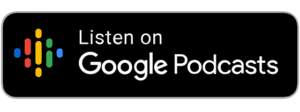Lean Lessons from a Budgeting Tool That Changed My Life | 038
Welcome to Lean Leadership for Ops Managers, the podcast for leaders in ops management who want to spark improvement, foster engagement, and boost problem solving, and still get their day job done. Here’s your host, leadership trainer, Lean enthusiast, and spy thriller junkie Jamie V. Parker.
Today’s episode is relevant for everyone.
I’m going to share a budgeting tool. A personal finance tool that completely changed my life.
I will walk you through what I’ve been able to achieve through it. Why the budgeting tool and approach is so effective. And I’ll tie it back to how that can help us in our work as lean practicing leaders.
You can see more details and get relevant leaks at our show notes at https://processplusresults.com/podcast/ – Episode 38.
There’s a link to sign up for a free trial of this budgeting software, but no pressure to use it. I’ve actually bought a year’s worth of this software for many people over the years. Because I believe in it so much.
Are you ready? Let’s go…
>>>>
I remember the moment I decided to do something about my finances. It was a very specific conversation. About a year before that point, I had gotten a promotion. I moved to Denver. Bought my first house. I was making pretty good money.
My boss at that time had a house full of kids. He’s very frugal, and fiscally responsible. He made a comment to me. He said, “you must be really banking away money without kids”.
I’m sure I got the words wrong. I might even remember the sentiment wrong. But I won’t forget how it impacted me.
I wasn’t banking money away. I had my 401k contribution. 5% or 6% at that time. And that was it. Some months I was riding the credit card float. Not able to pay my purchases off until the next paycheck.
I wasn’t accruing interest because I paid it off before the due date. But I legitimately didn’t have the cash when I made the purchase.
I was perplexed. My boss was right.
Based on my income, I should have more expendable money. And be able to save more. Should have more to spend on vacations and the things I love. But I didn’t.
I wasn’t living extravagantly. I wasn’t spending a bunch of money. But I still didn’t have any.
I couldn’t explain where the money went. I would look and see this is how much net income I had. How much my paycheck was. How in the world was I spending that much?
It didn’t make sense…
That’s when I started to tackle it.
I made a spreadsheet budget and put all my categories. How much money I should spend on each one.
Then I did an envelope system. You physically get envelopes and make all your categories. Like a plastic sorter. After I got paid, I would go to the bank to get a bunch of cash out and put it in there.
When I go shopping for something specific, I’d take cash for that category out with me. When I get back I record the amount on the index card and put back the excess. It was making me more aware of where I was overspending.
>>>>
But it was a “beast” to do. The system was complicated. Carrying cash around and saving receipts wasn’t easy. Remembering how much went to what. It was one of those things that I just couldn’t keep up.
The impact was positive. I could see and have a little bit more understanding. Make maybe a few steps of 1% improvement.
After 8 months, I hit a ceiling. It was done. I couldn’t keep it up. And I couldn’t see a way for that system to get me past where I was.
I was stuck.
The good news is I learned that the idea behind the envelope system provided value. The actual tool I was using wasn’t working for my circumstances.
That’s when I went on a virtual scavenger hunt.
There’s got to be a digital version of this…
Then I found it. It’s a system called “You Need a Budget”. Or YNAB for short. In 2015, I signed up and I started using it.
Here’s what happened in a matter of months. I paid off the remaining $10,000 of my student loans. I learned very quickly not just that I was overspending compared to my budget, my expected. But where I was overspending.
I could see where my budgeted amount just wasn’t reasonable at the time. And reasonable but my overspending was unnecessary. Within 4 to 6 months. I was a full month ahead. Not only had I moved off the credit card float, but as an example, all of my May expenses were fully funded by April 15th. Then, I was two months ahead.
I upped my 401k contributions to 12%. I started a Roth. I doubled my amount of charitable giving and I started saving for specific goals.
One of the life and business coaches that I follow and have worked with is a woman named Susan Hyatt, At the time she was doing this retreat in Barcelona.
I want to go on that. But that’s $10,000 just for the retreat. Plus airfare, plus any days that you add on for your own travel.
I don’t know how long I saved for it. 7 or 9 months, but I saved. And then I paid cash for that retreat.
When a family member needed help financially. I could give him the money. He ended up paying me back about 18 months later. I appreciate that he did. But I didn’t expect it. I certainly didn’t require it. Because I know that money can get in the middle of relationships and family issues.
I definitely don’t want that to happen. And I wanted to be able to give him that money feeling 100% comfortable that it’s OK if he never repays it.
If he does decide to repay it. That needed to be his choice. But I wanted to be able to provide it as a gift instead of a loan because I did not want that to ever be a thing between us.
I was able to help him because of the work with YNAB.
But it doesn’t stop there…
In 2018, I left my corporate job to start my own consulting practice. So that I could serve more people. Have a bigger impact, and do the work that I love doing.
Without a single client, without a single dollar on the books, I left my predictable income. I could do it because YNAB allowed me to prioritize and save.
I use YNAB in my business too. That’s how I was able to manage through lost income in 2020.
If you’re a small business owner, You may have heard of Profit First by Mike Michalowicz. I love the idea behind it. About allocating percentages.
But in his method, you have to open a lot of bank accounts. Transfer money between them. Have all these different buckets for bank accounts, for taxes and owners compensations. There’s no way I would do that.
But with YNAB I can do the exact same process and get the benefits of Profit First, but do it all in one business checking account.
Which lets me budget and manage cash flow in a way that QuickBooks ain’t ever going to let you do it. But now I can combine Profit First and YNAB and have a very strong understanding and decision making about finances.
I’m going to be real honest and tell you. The first few years of entrepreneurship have made me rich. I’ve spent a lot of money investing in my business.
I cut expenses in my personal life to reduce my personal budget spend. And there are a lot of money goals that I’m not meeting yet.
But the reason I can do all this — make it through those hard times, and make those choices that align with my priorities and my values is because of YNAB.
So what is it? It’s a digital envelope system.
Your bank accounts, credit cards and your digital budget you can process manually, which a lot of people recommend.
Or you can be like me. I connect my accounts online. So all of my transactions and stuff auto populate.
So you set your budget, you’ve got your categories. Regular monthly bills like mortgage, electric and water. Plus other expenses like my groceries and fun money.
Then income comes into my top line item, and I budget those dollars to the categories of where I want those dollars to go, where do I need that money to work.
Every single dollar gets a job. I budget all the way down to zero. It might be to those expenses, it might be to a savings goal. Maybe I have a savings goal for that retreat in Barcelona.
Savings doesn’t just go into some random bucket. What am I saving for? Am I saving for my six-month emergency fund? a new car? a trip? Every dollar gets budgeted.
When I make a purchase, because it’s automated, the transaction it’ll go in. Or if it’s manually you put it in and categorize it.
So the money I spend comes out of whatever category. So I go to the gas station and fill up my tank on my car, whatever it is, is going to come out of the fuel line.
Back when I used to go to Broncos games, I would buy all my tickets and those would come out of my Sports category.
Now I want to maximize my cashback credit card rewards. I would just use the credit card. And it would move the amount from that category. Let’s say it’s those Broncos tickets.
So it moved from my sports category and then moved that money down to my credit card bill category.
I’m always going to pay that statement balance and that money is going to be sitting there in the category ready to pay it.
Money is still in my bank account. I’m just in YNAB saying that I know that money is earmarked for my credit card bill. And I’m not going to spend it on anything else. Because it’s in the credit card bill category.
If something happens. I can move money from category to category. I can budget in advance so I can take my income from this month and budget it to next month.
There’s an app on my phone when I’m at the mall buying clothes. I can check my clothes budget before I check out.
I can decide that I want to put something back to stay within my budget. Or I can decide that the clothes are really important. And choose to move money from a different category to cover it.
I have complete control. And so it’s not about budgeting from a place of scarcity. It’s about budgeting to align with your priorities, with your values, with what’s important to you today.
It’s so amazing that there is this YNAB fan group on Facebook that is not run by YNAB at all. It’s run by users, volunteers, app users. And it has more than 60,000 members.
We have our own language. We’ve got our own vocabulary, but it’s still a community. So if you have a question or a problem You can go into that community. People pipe in and help you. If you’re feeling frustrated, people will listen and give you encouragement.
And if you have a win you drop it in there and people are going to celebrate with you. They’re jumping up and down ready to help.
This is what we mean by creating value. That’s what’s happening here.
>>>>
So here are the main impacts and how they tie back for Lean-practicing leaders.
YNAB allows me to prioritize. Based on what my values are, what do I think is important? Do I want the clothes or do I want to go to the Broncos game? There’s no right or wrong answer except what’s important to me.
I get to change that as my needs and my values change. This enables me to prioritize based on my values.
It’s visual management. It shows me Expected – the how much I plan to spend and the Actual – the how much I’ve actually spent.
I can put those categories in there for let’s say it’s my car insurance. Instead of having that extra $4 a month fee because you’re paying monthly, I can pay annually.
I can see that actual – how much I plan to spend.
OR the expected – how much I plan to spend.
The actual how much I actually spend.
And what is the variance?
YNAB enables good decision-making. It’s not about what I decide, but about helping me make informed decisions.
Think about that when you’re thinking about your daily or startup meetings or stand-ups, your huddles. And you’re thinking about the board and the agenda. How is that helping your team members make good decisions?
Think about your visual management. What type of visual management is there. And how does it help team members make informed decisions or how does that help you in your own leader standard work? In your own routines.
But we’re not done. Because I can change my categories. I can set a vision, and then I can set the goals to get there.
It helps me with behavior change. I can look at the app and make those decisions. I can look at my categories, make a decision. It enables me to handle the unexpected.
Now I can take a look and see everything that I have and say, how can I move this around? How can I make this work?
I now have the information to problem solve when something happens or when I have repeated variances of budget to actual.
So think about the systems you’re using, the tools you’re using, the communication, the routines.
How is that helping you and your team to better solve problems when there are repeated variances?
I get to iterate. The system is flexible. It’s not some board that we had printed and now we can’t change it.
We’re able to change. As I get closer to my next target condition or my challenge or my vision as my circumstances change. I can go to YNAB any time and change my budget categories, reallocate how I’m spending the money, move things around. I have complete control and I can iterate in the moment.
And then there’s community. To help teach and support, mentor, share, empathize and celebrate. To take this journey with me.
So I want you to think about what you’re hearing. And how it maps to you. To show you can effectively lead people to create value.
>>>>
In fact. That is your next step.
I want you to reflect on the list of things I’m about to give you. And ask yourself how well these things show up in how you’re leading your team.
Ready? Here’s your list to reflect on.
- Aligning priorities with values.
- Making work visual.
- Showing Expected to Actual and being able to see variances that occur.
- Planning that informs decision-making.
- Visuals that inform decision-making.
- Priorities that inform decision-making.
- Setting a vision, setting smaller goals, and then iterating and adjusting and problem-solving your way there.
- Flexibility to meet changing needs and to respond more quickly.
- Community togetherness.
Reflect on those things. How well are they showing up in how you’re leading your team to create value?
I’ve been using YNAB for 6 years. And I have no intention of ever stopping. I have every intention of continuing it.
And if you add on to that, the fact that it is so good, I have no intention of ever canceling my subscription. Here’s the thing, it’s a really good company. It’s a great place to work. They make responsible decisions, they lead from the heart, and I feel good about giving them my money.
And here’s what I suspect, that those two things, that they provide a tremendous amount of value and that I feel good giving them my money. My suspicion is that those two existing together aren’t entirely coincidental.
I am a YNABer for life.
If you want to learn more or if you want to check it out, you can head over to the show notes, at https://processplusresults.com/podcast, and then find episode 38.
Until next time.















